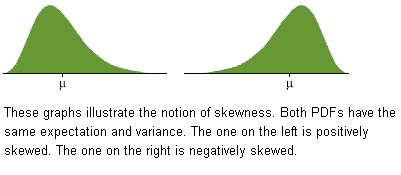Nosokinetics
Measuring bed requirements
skewed data, wrong method, wrong result
Mark Joy
The quote above originates from a recent report in Australia, the Crowley Inquiry 2004 (available here in PDF); however the relevance to the UK should not be underestimated. A simple observation on the parlous state of affairs concerning the use and abuse of statistics seems apt. In order to measure the demand on beds, NHS Trusts have tended to estimate bed requirements over a period of days, thus
r = l * p / d
where r is the number of beds required, l is the mean length of stay, p is the number of patients contracted to be treated in the period and d is the number of days in the period.
Implicit in such advice is the notion that the mean of an empirical distribution will capture its qualitative features! Presumably, in this world all distributions are bell-shaped. In fact, it has been shown that the highly skewed nature of patients' length of stay will cause this equation to underestimate the actual number of beds required.

Figure 1. Positive and negative skewed data. The presence of simple and complex patients in most services, skews hospital length of stay data to the right.
Copyright Contingency Analysis.
Workshop advice given by the Modernisation Agency for calculating bed requirements for the NHS advocated using this equation, but substituting the 80th percentile of length of stay for l, equally as daft!
Contact: M.Joy@kingston.ac.uk, Department of mathematics, Kingston University, Surrey
Some navigational notes:
A highlighted number may bring up a footnote or a reference. A highlighted word hotlinks to another document (chapter, appendix, table of contents, whatever). In general, if you click on the 'Back' button it will bring to to the point of departure in the document from which you came.Copyright (c)Roy Johnston, Peter Millard, 2005, for e-version; content is author's copyright,